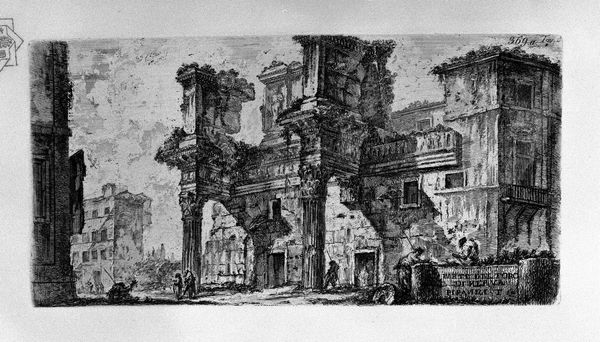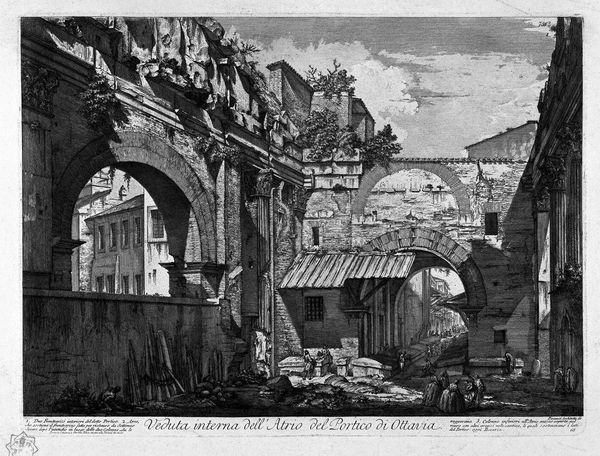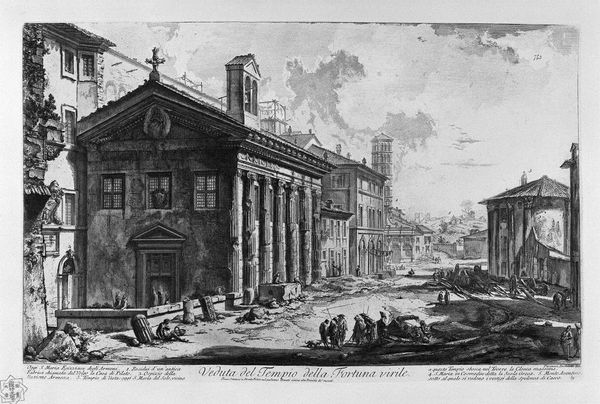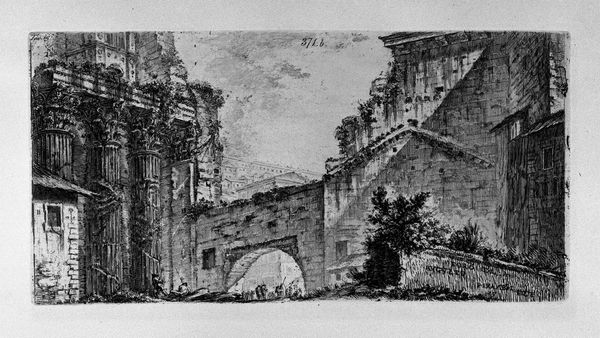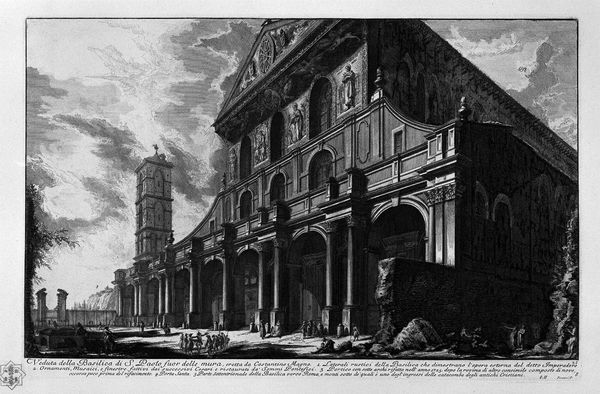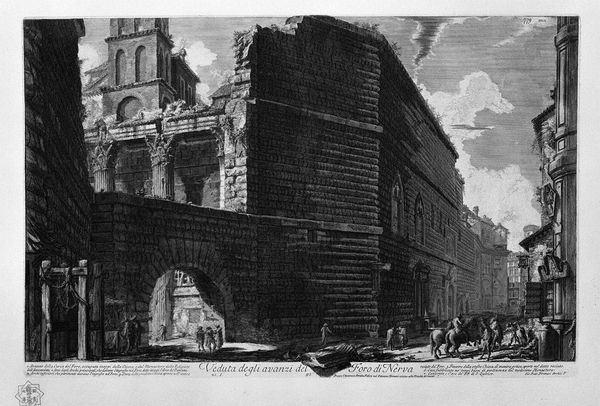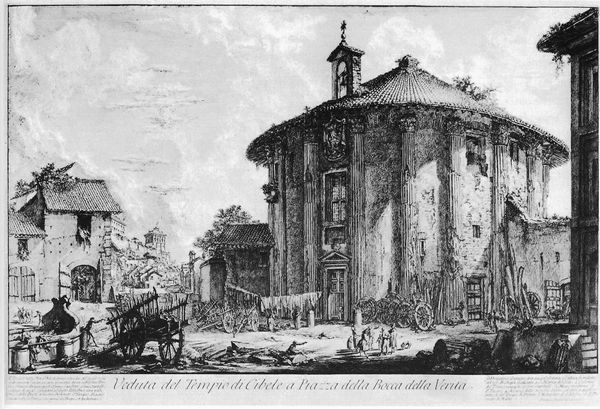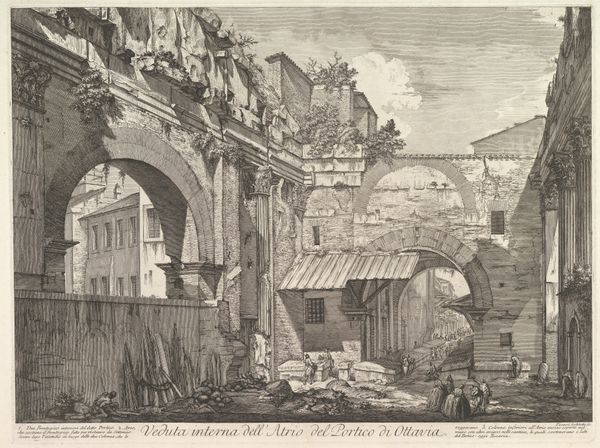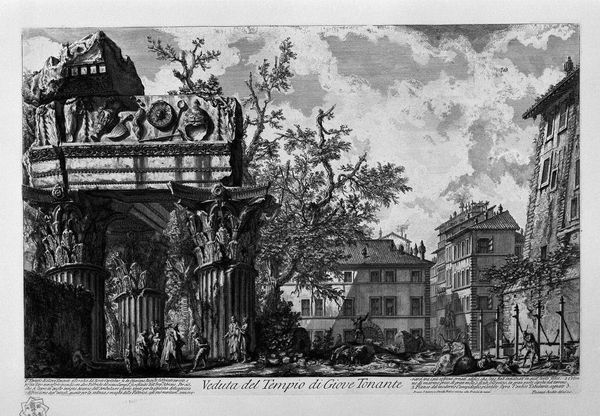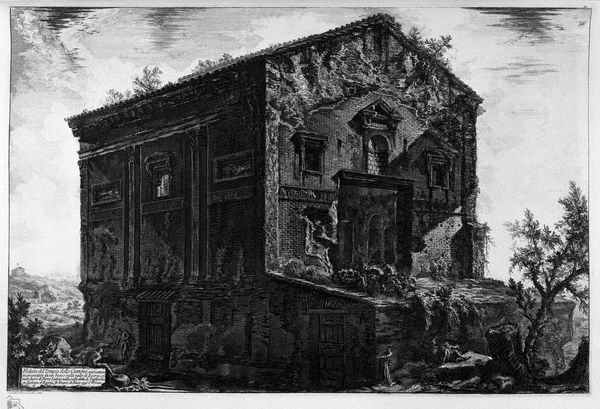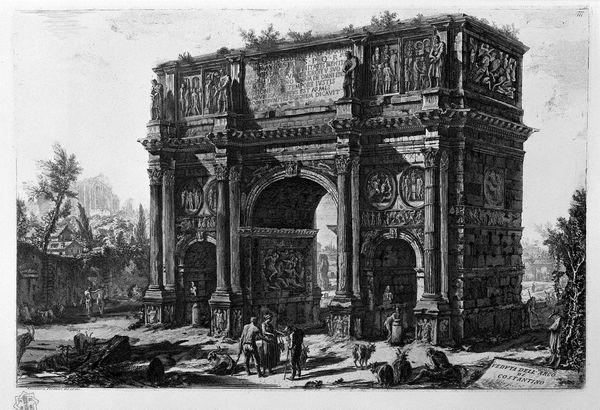
Remains of a covered porch, or cryptoporticus, in a villa of Domitian five miles distant from Rome on the Via Frascati
0:00
0:00
print, etching, relief, architecture
# print
#
etching
#
sculpture
#
relief
#
landscape
#
form
#
romanesque
#
column
#
arch
#
line
#
architecture
#
statue
Copyright: Public domain
Editor: This is Giovanni Battista Piranesi's etching titled "Remains of a covered porch, or cryptoporticus, in a villa of Domitian five miles distant from Rome on the Via Frascati." It's a very detailed black and white print showing the ruins of some Roman architecture. I’m struck by how grand the scale feels, even in its deteriorated state. What do you see in this piece, considering the image and its implied meanings? Curator: I see the dance between decay and enduring power. Notice how Piranesi uses light and shadow, especially in the archways. What symbols resonate with you here? Think about what a ruin signifies. Editor: Well, the arches, even broken, still suggest strength and permanence. I also see sculptures high up on one building. Curator: Precisely. The arch as a symbol is connected with ideas of triumph, commemoration, empire, even passage and transition, wouldn't you say? The presence of those sculptures is key. They are echoes of a civilization, hinting at narratives and ideals embedded in cultural memory. Does the contrast between ruin and remnant suggest something? Editor: That's interesting! So, the ruins evoke a sense of the past, but these sculptures signal something deeper, like values or stories that persist even when everything physical falls apart. Almost like resilience. I see people, perhaps contemporary to the artist. Do you think Piranesi was making a commentary on his contemporary moment? Curator: Piranesi’s inclusion of contemporary figures does seem to be a form of subtle protest perhaps, against the backdrop of an older civilization that continues to hold space in cultural memory. How the weight of that memory either hinders or inspires…what do you think? Editor: I guess the endurance of symbols is really a powerful idea that I hadn’t considered fully. It suggests culture is a dialogue across time, which the ruin sort of physically demonstrates here. Thank you! Curator: Indeed!
Comments
No comments
Be the first to comment and join the conversation on the ultimate creative platform.
